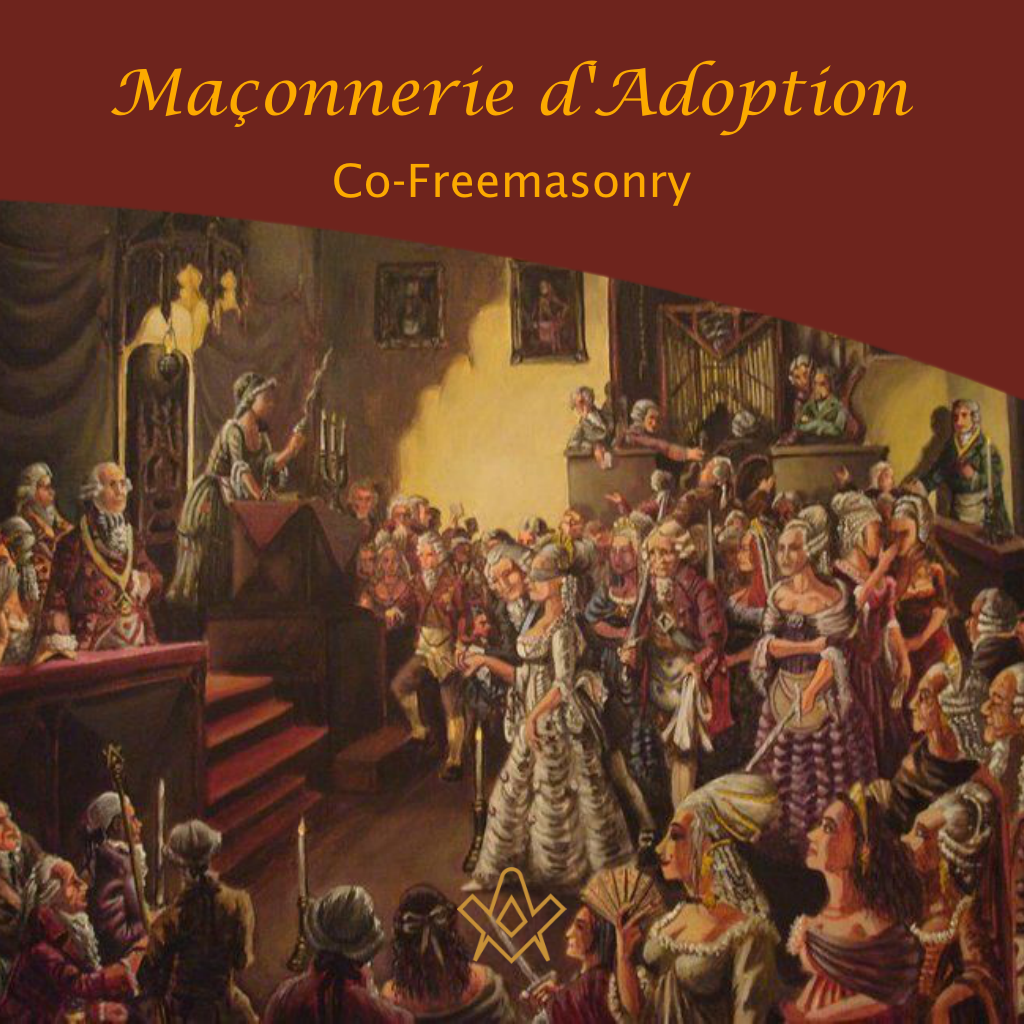Extracted, edited and abridge from Albert G. Mackey’s Encyclopedia Of Freemasonry And Its Kindred Sciences, Volume 1: A-C, pp42-49.
An organization which bears a very imperfect resemblance to Freemasonry in its forms and ceremonies, and which was established in France for the initiation of females, has been called by the French Maçonnerie d’Adoption, or Adoptive Freemasonry, and the societies in which the initiations take place have received the name of Loges d’Adoption, or Adoptive Lodges.
This appellation is derived from the fact that every Female or Adoptive Lodge is obliged, by the regulations of the association, to be, as it were, adopted by, and thus placed under the guardianship of, some regular Lodge of Freemasons.
As to the exact date which we are to assign for the first introduction of this system of Female Freemasonry, there have been several theories, some of which, undoubtedly, are wholly untenable, since they have been founded, as Masonic historical theories too often are, on an unwarrantable mixture of facts and fictions – of positive statements and problematic conjectures. M. J.S. Boubee, a distinguished French Freemason, in his Études Maçonniques (Masonic studies), places the origin of Adoptive Freemasonry in the seventeenth century, and ascribes its authorship to Queen Henrietta Maria, the widow of Charles I of England.
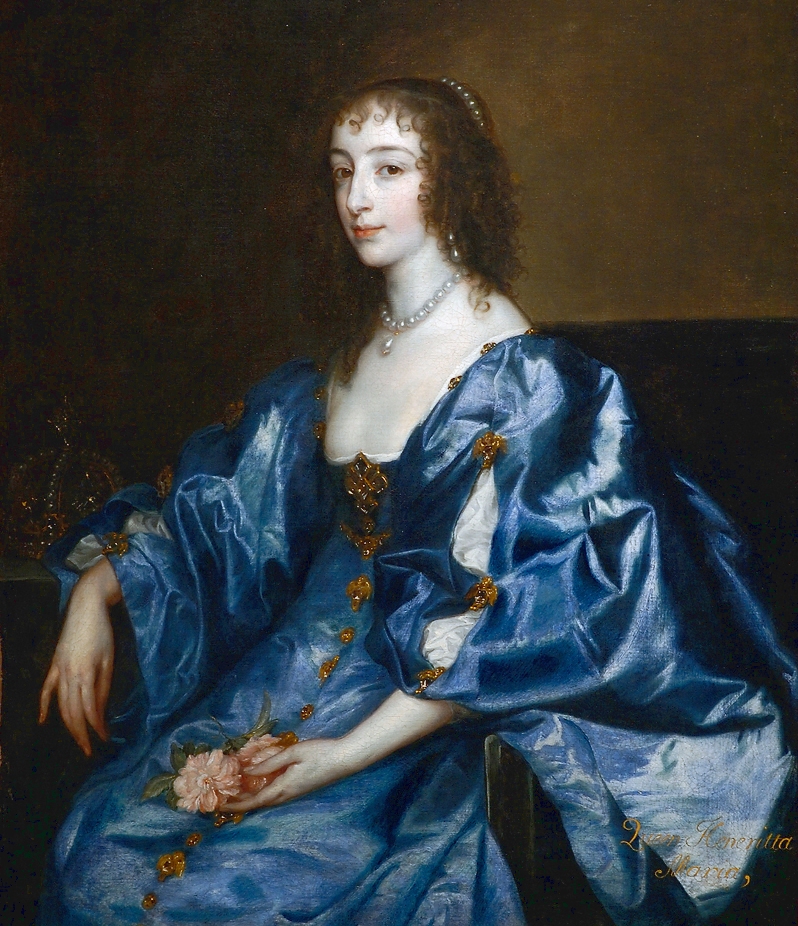
Princess Henrietta Maria of France, Queen consort of England – circa 1636/8 – by Anthony van Dyck
IMAGE LINKED: wikimedia Attribution 4.0 International (CC BY 4.0)
Boubee states, that on her return to France, after the execution of her husband, she took pleasure in recounting the secret efforts made by the Freemasons of England to restore her family to their position and to establish her son on the throne of his ancestors.
This, it will be recollected, was once a prevalent theory, now exploded, of the origin of Freemasonry – that it was established by the Cavaliers, as a secret political organization, in the times of the English civil war between the king and the Parliament, and as an engine for the support of the former.
Boubee adds, that the queen made known to the ladies of her court, in her exile, the words and signs employed by her Masonic friends in England as their modes of recognition, and by this means instructed them in some of the mysteries of the Institution, of which, he says, she had been made the protectress after the death of the king.
This theory is so full of absurdity, and its statements so flatly contradicted by well-known historical facts, that we may at once reject it as wholly without authority.

Portrait of Catherine I (1684–1727) by Jean-Marc Nattier
IMAGE LINKED: wikimedia Attribution 4.0 International (CC BY 4.0)
Others have claimed Russia as the birthplace of Adoptive Freemasonry; but in assigning that country and the year 1712 as the place and time of its origin, they have undoubtedly confounded it with the chivalric Order of Saint Catherine, which was instituted by the Czar, Peter the Great, in honour of the Czarina Catherine, and which, although at first it consisted of persons of both sexes, was subsequently confined exclusively to females.
But the Order of Saint Catherine was in no manner connected with that of Freemasonry. It was simply a Russian order of female knighthood.

Jewel of the Order of Saint Catherine – The original uploader was Meladina at English Wikipedia.
IMAGE LINKED: wikimedia Attribution 4.0 International (CC BY 4.0)
The truth seems to be that the regular Lodges of adoption owed their existence to those secret associations of men and woman which sprang up in France before the middle of the eighteenth century, and which attempted in all of their organization, except the admission of female members, to imitate the Institution of Freemasonry.
François-Timoléon Bègue Clavel (1798-1852) who, in his Histoire Pittoresque de la Franc-Maçonnerie, an interesting but not always a trustworthy work, adopts this theory, says (on page iii, third edition):
that female Masonry was instituted about the year 1730, that it made its first appearance in France, and that it was evidently a product of the French mind.
No one will be disposed to doubt the truth of this last sentiment. The proverbial gallantry of the French Freemasons was most ready and willing to extend to women some of the blessings of that Institution, from which the churlishness, as they would call it, of their Anglo-Saxon Brethren had excluded them.
But the Freemasonry of Adoption did not at once and in its very beginning assume that peculiarly imitative form of the Craft which it subsequently presented, nor was it recognized as having any connection with our own Order until more than thirty years after its first establishment.
Its progress was slow and gradual. In the course of this progress, it affected various names and rituals, many of which have not been handed down to us.
Evidently it was convivial and gallant in its nature, and at first seems to have been only an imitation of Freemasonry, since it was a secret society, having a form of initiation and modes of recognition.
A specimen of one or two of these associations of women may be interesting.
Ordre des Félicitaires
One of the earliest of these societies was that which was established in the year 1743, at Paris, under the name of the Ordre des Félicitaires, which we might very appropriately translate as the Order of Happy Folks.
The vocabulary and all the emblems of the order were nautical. The sisters made symbolically a voyage from the island of Felicity, in ships navigated by the brethren.
There were four degrees, namely, those of Cabin-boy, Captain, Commodore, and Vice-Admiral, and the Grand Master, or presiding officer, was called the Admiral.
Knights and Ladies of the Anchor
Out of this society there sprang, in 1745, another, which was called the Knights and Ladies of the Anchor, which is said to have been somewhat more refined in its character, although for the most part it preserved the same formulary of reception.
Ordre des Fendeurs
Two years afterward, in 1747, the Chevalier Beauchaine, a very zealous Masonic adventurer, and the Master for life of a Parisian Lodge, instituted an androgynous society, or system of men and women, under the name of the Ordre des Fendeurs, or the Order of Wood-Cutters, whose ceremonies were borrowed from those of the well-known political society of the Carbonari.
All parts of the ritual had a reference to the sylvan vocation of wood-cutting, just as that of the Carbonari referred to coal-burning.
The place of meeting was called a wood-yard, and was supposed to be situated in a forest; the presiding officer was styled Pére Maître, which might be idiomatically interpreted as Goodman Maser; and the members were designated as cousins, a practice evidently borrowed from the Carbonari.
The reunions of the Wood-Cutters enjoyed the prestige of the highest fashion in Paris; and the society became so popular that ladies and gentlemen of the highest distinction in France united with it, and membership was considered an honour which no rank, however exalted, need disdain.
It was consequently succeeded by the institution of many other and similar androgynous societies, the very names of which it would be tedious to enumerate (see Clavel’s History, pages lll-2).
Out of all these societies-which resembled Freemasonry only in their secrecy, their benevolence, and a sort of rude imitation of a symbolic ceremonial – at last arose the true Lodges of Adoption, which did far claimed a connection with and a dependence on Freemasonry as that Freemasons alone were admitted among their male members-a regulation which did not prevail in the earlier organizations.
It was about the middle of the eighteenth century that the Lodges of Adoption began to attract attention in France, whence they speedily spread into other countries of Europe – into Germany, Poland, and even Russia; England alone, always conservative to a faut, steadily refusing to take any cognizance of them.
The Freemasons, says Clavel in his History (page 112), embraced them with enthusiasm as a practicable means of giving to their wives and daughters some share of the pleasures which they themselves enjoyed in their mystical assemblies.
This, at least, may be said of them, that they practiced with commendable fidelity and diligence the greatest of the Masonic virtues, and that the banquets and balls which always formed an important part of their ceremonial were distinguished by numerous acts of charity.

Duke of Chartres – Louis Philippe d’Orléans with the insignia of the grand master of the Grand Orient de France, the governing body of French freemasonry. By Michel Garnier
IMAGE LINKED: wikimedia Attribution 4.0 International (CC BY 4.0)
In addition to being a Jacobin, Philippe was also the Grand Master of the Masonic Grand Orient de France, the most powerful Masonic Obedience in worldwide Continental Freemasonry (which stands opposed to the “Regular” Freemasonry of the United Grand Lodge of England and the majority of lodges in the United States of America), from 1771 to 1793, even though he did not attend a meeting until 1777.
He later distanced himself from Freemasonry in a letter dated January 1793, and the Grand Orient vacated his position on 13 December 1793 (however, Philippe had already been executed weeks before)
Source: Wikipedia
The first of these Lodges of which we have any notice was that established in Paris, in the year 1760, by the Count de Bemouville. Another was instituted at Nijmegen, in Holland, in 1774, over which the Prince of Waldeck and the Princess of Orange presided.
In 1775 the Lodge of Saint Antoine, at Paris, organized a dependent Lodge of Adoption, of which the Duchess of Bourbon was installed as Grand Mistress and the Duke of Chartres, then Grand Master of French Freemasonry, conducted the business.

Duchess of Chartres, the Princess Lamballe by Antoine-François Callet (circa 1776, Callet)
IMAGE LINKED: wikimedia Attribution 4.0 International (CC BY 4.0)
She engaged in her close friendship with her own favorite lady-in-waiting Countess Étiennette d’Amblimont de Lâge de Volude, as well as her charity and her interest in the Freemasons. De Lamballe as well as her sister-in-law became inducted in the Freemasonic women’s Adoption Lodge of St. Jean de la Candeur in 1777, and was made Grand Mistress of the Scottish Lodge, the head of all the Lodges of Adoption, in January 1781: though Marie Antoinette did not become a formal member, she was interested in Freemasonry and often asked Lamballe of the Adoption Lodge.
Source: Wikipedia
In 1777 there was an Adoptive Lodge of La Candeur, or Frankness, over which the Duchess of Bourbon presided, assisted by such noble ladies as the Duchess of Chartres, the Princess Lamballe, and the Marchioness de Genlis; and we hear of another governed by Madame Helvetius, the wife of the il1ustrious philosopher; so that it will be perceived that fashion, wealth, and literature combined to give splendour and influence to this new order of Female Freemasonry.

Duchess of Bourbon, Louise Marie Thérèse Bathilde; (1750 – 1822) by Charles Lepeintre
IMAGE LINKED: wikimedia Attribution 4.0 International (CC BY 4.0)
At first the Grand Orient of France appears to have been unfavourably disposed to these imitation pseudo Masonic and androgynous associations, but at length they became so numerous and so popular that a persistence in opposition would have evidently been impolitic, if it did not actually threaten to be fatal to the interests and permanence of the Masonic Institution.
The Grand Orient, therefore, yielded its objections, and resolved to avail itself of that which it could not suppress.
Accordingly, on the 10th of June, 1774, it issued an Edict by which it assumed the protection and control of the Lodges of Adoption.
Rules and regulations were provided for their government, among which were two:
first, that no males except regular Freemasons should be permitted to attend them;
secondly, that each Lodge should be placed under the charge and held under the sanction of some regularly constituted Lodge of Freemasons, whose Master, or in his absence, his deputy, should be the presiding officer, assisted by a female President or Mistress; and such has since been the organization of all Lodges of Adoption.
A Lodge of Adoption, under the regulations established in 1774, consists of the following officers: Grand Master, a Grand Mistress, an Orator, dressed as a Capuchin or Franciscan monk, an Inspector, an Inspectress, a Male and Female Guardian, a Mistress of Ceremonies.
All of these officers wear a blue watered ribbon over the shoulder, to which is suspended a golden trowel, and all the brothers and sisters have aprons and white gloves.
The Rite of Adoption consists of four Degrees, whose names in French and English are as follows :
1. Apprentice, or Female Apprentice.
2. Compagnonne, or Craftswoman.
3. Maîtresse, or Mistress.
4. Parfaite Maçonne, or Perfect Masoness.
It will be seen that the Degrees of Adoption, in their names and their apparent reference to the gradations of employment in an operative art, are assimilated to those of legitimate Freemasonry; but it is in those respects only that the resemblance holds good.
In the details of the ritual there is a vast difference between the two Institutions.
There was a Fifth Degree added in 1817, by some modern writers called Female elect-Sublime Dame Ecossaise, or Sovereign Illustrious Scottish Dame, but it seems to be a recent and not generally adopted innovation.
At all events, it constituted no part of the original Rite of Adoption.
The First, or Female Apprentice’s Degree, is simply preliminary in its character, and is intended to prepare the Candidate for the more important lessons which she is to receive in the succeeding Degrees.
She is presented with an apron and a pair of white kid gloves. The apron is given with the following charge, in which, as in all the other ceremonies of the Order, the Masonic system of teaching by symbolism is followed:
Permit me to decorate you with this apron, kings, princes, and the most illustrious princesses have esteemed, and will ever esteem it an honour to wear it, as being the symbol of virtue.
On receiving the gloves, the candidate is thus addressed:
The colour of these gloves will admonish you that candour and truth are virtues inseparable from the character of a true Freemason. Take your place among us, and be pleased to listen to the instructions which we are about to communicate to you.
The following Charge is then addressed to the members by the Orator.
MY DEAR SISTERS Nothing is better calculated to assure you of the high esteem our society entertains for you, than your admission as a member.
The common herd, always unmannerly, full of the most ridiculous prejudices, has dared to sprinkle on us the black poison of calumny; but what judgment could it form when deprived of the light of truth, and unable to feel all the blessings which result from its perfect knowledge?
You alone, my dear sisters, having been repulsed from our meetings, would have the right to think us unjust; but with what satisfaction do you learn to-day that Freemasonry is the school of propriety and of virtue, and that by its laws we restrain the weaknesses that degrade an honourable man, in order to return to your side more worthy of your confidence and of your sincerity.
However, whatever pleasure these sentiments have enabled us to taste, we have not been able to fill the void that your absence left in our midst ; and I confess, to your glory, that it was time to invite into our societies some sisters who, while rendering them more respectable will ever make of them pleasures and delights.
We call our Lodges Temples of Virtue, because we endeavour to practice it.
The mysteries which we celebrate therein are the grand art of conquering the passions and the oath that we take to reveal nothing is to prevent self-love and pride from entering at all into the good which we ought to do.
The beloved name of Adoption tells you sufficiently that we choose you to share the happiness that we enjoy, in cultivating honour and charity.
It is only after a careful examination that we have wished to share it with you.
Now that you know it we are convinced that the light of wisdom will illumine all the actions of your life, and that you will never forget that the more valuable things are the greater is the need to preserve them.
It is the principle of silence that we observe, it should be inviolable.
May the God of the Universe who hears us vouchsafe to give us strength to render it so.
Throughout this Charge it will be seen that there runs a vein of gallantry, which gives the true secret of the motives which led to the organization of the society, and which, however appropriate to a Lodge of Adoption, would scarcely be in place in a Lodge of the legitimate Order.
In the Second Degree, or that of Compagnonne, or Craftswoman, corresponding to our Fellow Craft, the Lodge is made the symbol of the Garden of Eden, and the candidate passes through a mimic representation of the temptation of Eve, the fatal effects of which, culminating in the deluge and the destruction of the human race, are impressed upon her in the lecture or catechism.
Here we have a scenic representation of the circumstances connected with that event, as recorded in Genesis.
The candidate plays the part of our common mother. In the centre of the Lodge, which represents the garden, is placed the tree of life, from which ruddy apples are suspended.
The serpent, made with theatrical skill to represent a living reptile, embraces in its coils the trunk.
An apple plucked from the tree is presented to the recipient, who is persuaded to eat it by the promise that thus alone can she prepare herself for receiving a knowledge of the sublime mysteries of Freemasonry.
She receives the fruit from the tempter, but no sooner has she attempted to bite it, than she is startled by the sound of thunder; a curtain which has separated her from the members of the Lodge is suddenly withdrawn, and she is detected in the commission of the act of disobedience.
She is sharply reprimanded by the Orator, who conducts her before the Grand Master.

A tree bearing apples labelled with virtues; representing the life of Christian virtue. Coloured lithograph, 1870, after J. Bakewell, 1771
IMAGE LINKED: wellcome collection Attribution 4.0 International (CC BY 4.0)
This dignitary reproaches her with her fault, but finally, With the consent of the Brethren and sisters Present, he pardons her in the merciful spirit of the Institution, on the condition that she will take a vow to extend hereafter the same clemency to others.
All of this is allegorical and very pretty, and it cannot be denied that on the sensitive imaginations of females such ceremonies must produce a manifest impression.
But it is needless to say that it is nothing like Freemasonry.
There is less ceremony, but more symbolism, in the Third Degree, or that of Mistress.
Here are introduced, as parts of the ceremony, the tower of Babel and the theological ladder of Jacob.
Its rounds, however, differ from those peculiar to true Freemasonry, and are said to equal the virtues in number.
The lecture or catechism is very long, and contains some very good points in its explanations of the symbols of the degree.
Thus, the tower of Babel is said. to signify the pride of man-its base, his folly – the stones of which it was composed, his passions – the cement which united them, the poison of discord-and its spiral form, the devious and crooked ways of the human heart.
In this manner there is an imitation, not of the letter and substance of legitimate Freemasonry, for nothing can in these respects be more dissimilar, but of that mode of teaching by symbols and allegories which is its peculiar characteristic.
The Fourth Degree, or that of Perfect Masoness, corresponds to no Degree in legitimate Freemasonry.
It is simply the summit of the Bite of Adoption, and hence is also called the Degree of Perfection.
Although the Lodge, in this , is supposed to represent the Mosaic tabernacle in the wilderness, yet the ceremonies do not have the same reference.
In one of them, however, the liberation, by the candidate, of a bird from the vase in which it had been confined is said to symbolize the liberation of man from the dominion of his passions; and thus a far-fetched reference is made to the liberation of the Jews from Egyptian bondage.
On the whole, the ceremonies are unrelated, they are disconnected, but the lecture or catechism contains some excellent lessons.
Especially does it furnish us with the official definition of Adoptive Freemasonry, which is in these words.
It is a virtuous amusement by which we recall a part of the mysteries of our religion; and the better to reconcile humanity with the knowledge of its Creator, after we have inculcated the duties of virtue, we deliver ourselves up to the sentiments of a pure and delightful friendship by enjoying in our Lodges the pleasures of society-pleasures which among us are always founded on reason, honor, and innocence.
Apt and appropriate description is this of an association, secret or otherwise, of agreeable and virtuous well-bred men and women, but having not the slightest application to the design or form of true Freemasonry.

Guillemain de Saint Victor, the author of Manuel des Franches-Maçonnes, on La Vraie Maçonnerie d’Adoption, meaning Handbook of the Women Freemasons or the True Freemasonry of Adoption, which forms the third part of the Recueil Précieux, or Choice Collection, who has given the best ritual of the Rite and from whom the preceding account has been taken, thus briefly sums up the objects of the Institution :
The First Degree contains only, as it ought, moral ideas of Freemasonry ;
the Second Degree is the initiation into the first mysteries, commencing with the sin of Adam, and concluding with the Ark of Noah as the first favour which God granted to men ;
the Third and Fourth Degrees are merely a series of types and figures drawn from the Holy Scriptures, by which we explain to the candidate the virtues which she ought to practice
(see page 13, edition 1785).
The Fourth Degree, being the summit of the Rite of Adoption, is furnished with a Table Lodge, or the ceremony of a banquet, which immediately succeeds the dosing of the Lodge, and which, of course, adds much to the social pleasure and nothing to the instructive character of the Rite.
Here, also, there is a continued imitation of the ceremonies of the Masonic Institution as they are practiced in France, where the ceremoniously conducted banquet, at which Freemasons only are present, is always an accompaniment of the Master’s Lodge.
Thus, as in the banquets of the regular Lodges of the French Rite, the members always use a symbolical language by which they designate the various implements of the table and the different articles of food and drink, calling, for instance, the knives swords, the forks pickaxes, the dishes materials, and bread a rough ashlar.
(see Clavel’s History, page 30)
In imitation of this custom, the Rite of Adoption has established in its banquets a technical vocabulary, to be used only at the table.
Thus the Lodge room is called Eden, the doors barriers, the minutes a ladder, a wineglass is styled a lamp, and its contents oil-water being white oil and wine red oil.
To fill your glass is to trim your lamp, to drink is to extinguish your lamp, with many other eccentric expressions.
(Clavel’s History, page 34)
Much taste, and in some instances, magnificence, are displayed in the decorations of the Lodge rooms of the Adoptive Rite.
The apartment is separated by curtains into different divisions, and contains ornaments and decorations which of course vary in the different degrees.
The orthodox Masonic idea that the Lodge is a symbol of the world is here retained, and the four sides of the hall are said to represent the four continents-the entrance being called Europe, the right side Africa, the left America, and the extremity, in which the Grand Master and Grand Mistress are seated, Asia.
There are statues representing Wisdom, Prudence, Strength, Temperance, Honour, Charity, Justice, and Truth.
The members are seated along the sides in two rows, the ladies occupying the front one, and the whole is rendered as beautiful and attractive as the taste can make it.
(Recueil Précieuz, page 24)
The Lodges of Adoption flourished greatly in France after their recognition by the Grand Orient.
The Duchess of Bourbon, who was the first that received the title of Grand Mistress, was installed with great pomp and splendour, in May, 1775, in the Lodge of Saint Antoine, in Paris.
She presided over the Adoptive Lodge La Candeur until 1780, when it was dissolved.
Attached to the celebrated Lodge of the Nine Sisters, which had so many distinguished men of letters among its members, was a Lodge of Adoption bearing the same name, which in 1778 held a meeting at the residence of Madame Helvetius in honour of Benjamin Franklin then American ambassador at the French court.
During the Reign of Terror of the French Revolution, Lodges of Adoption, like everything that was gentle or humane, almost entirely disappeared.
But with the accession of a regular government they were resuscitated, and the Empress Josephine presided at the meeting of one at Strasburg in the year 1805.
They continued to flourish under the imperial dynasty, and although less popular, or less fashionable, under the Restoration, they, subsequently recovered their popularity, and are still in existence in France .
Footnotes
References
Adoptive Freemasonry has its literature, although neither extensive nor important, as it comprises only books of songs, addresses, and rituals. Of the latter the most valuable are:
1. La Maçonnerie des Femmes, or Feminine Freemasonry, published in 1775, and containing only the first three degrees, for such was the system when recognized by the Grand Orient of France in that year.
2. La Vraie Maçonnerie d’Adoption, or The True Freemasonry of Adoption, printed in 1787. This work, which is by Guillemain de Saint Victor, is perhaps the best that has been published on the subject of the Adoptive Rite, and is the first that introduces the Fourth Degree, of which Guillemain is supposed to have been the inventor, since all previous rituals include only the three degrees.
3. Maçonnerie d’Adoption pour les Femmes, or The Freemasonry of Adoption for Women, contained in the second part of E. J. Chappron’s Necessaire Maçonnique, or Essential Freemasonry, and printed at Paris in 1817. This is valuable because it is the first ritual that contains the Fifth Degree.
4. La Franc-Maçonnerie des Femmes, or The Freemasonry of Women. This work, which is by Charles Monselet, is of no value as a ritual, being simply a tale founded on circumstances connected with Adoptive Freemasonry.
In Italy, the Carbonari, or Wood Burners, a secret political society, imitated the Freemasons of France in instituting an Adoptive Rite, attached to their own association.
Hence, an Adoptive Lodge was founded at Naples in the beginning of the nineteenth century, over which presided that friend of Freemasonry, Queen Caroline, the wife of Ferdinand II.
The members were styled Giardiniere, or Female Gardeners; and they called each other Cugine, or Female Cousins, in imitation of the Carbonari, who were recognized as Buoni Cugini, or Good Cousins.
The Lodges of Giardiniere flourished as long as the Grand Lodge of Carbonari existed at Naples.
(see also Eastern Star, and Adoptive Freemasonry, American)
Article by: Albert G. Mackey
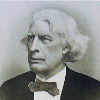
Albert Gallatin Mackey (1807 – 1881) was an American medical doctor and author.
He is best known for his books and articles about freemasonry, particularly the Masonic Landmarks.
In 1849 he established The Southern and Western Masonic Miscellany, a weekly masonic magazine.
He served as Grand Lecturer and Grand Secretary of The Grand Lodge of South Carolina, as well as Secretary General of the Supreme Council of the Ancient and Accepted Scottish Rite for the Southern Jurisdiction of the United States
Recent Articles: Women Freemasons
 Freemasonry and Women's Rights - P4 The Freemason judge who ruled women were 'persons' |
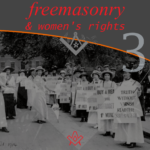 Freemasonry and Women's Rights - P3 Who embraced and influenced the women’s rights and suffragette movements in Europe in the late nineteenth and early twentieth century |
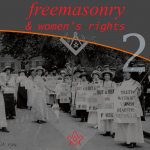 Freemasonry and Women's Rights - P2 Second part, in the introductory series exploring the history of mixed, Co- and female Freemasonry, and how the fraternity and its members helped progress the emancipation and rights of women. |
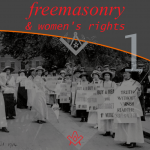 Freemasonry and Women's Rights - P1 A two-part introductory series exploring the history of mixed, Co- and female Freemasonry, and how the fraternity and its members helped progress the emancipation and rights of women. |
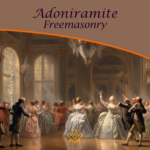 Adoniramite Freemasonry, also known as Adoptive Freemasonry, emerged in 18th-century France as a unique initiation system for women. Mimicking the secrecy and symbolism of regular Freemasonry, these Lodges of Adoption attracted noblewomen, literary figures, and even royalty. Explore the origins, rituals, and controversies surrounding this intriguing branch of Freemasonry. |
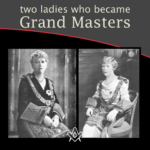 Two ladies who became Grand Masters Who were the two ladies, mother and daughter who become Grand Masters of Honourable Fraternity of Ancient Freemasons |
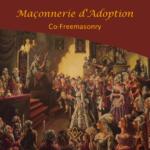 A look at Adoptive Lodges that were established in France for the initiation of females; a short Extract from the Encyclopedia Of Freemasonry |
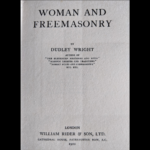 Published in 1922, this interesting, and whimsical book was penned by Dudley Wright |
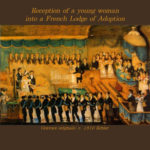 Look at the History of Women in Freemasonry. Although Several women had been introduced to Freemasonry prior to the 18th century, it was more by accident than invitation. |
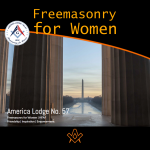 The Great American Experiment, a film by HFAF documenting the Consecration and Installation of Officers of America Lodge No. 57 on May 25, 2019 |
masonic knowledge
to be a better citizen of the world
share the square with two brothers

click image to open email app on mobile device



